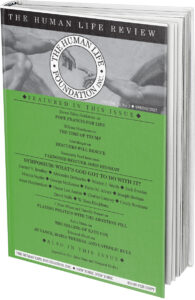IS RUTH BADER GINSBURG GETTING MELLOW IN HER OLD AGE? ASK THE TIMES….
You wouldn’t think there’d be any doubt that Ruth Bader Ginsburg is a votary of abortion. You would have thought wrong.
Before she became an Associate Justice, Ruth Bader Ginsburg was a lawyer and, eventually, general counsel for the American Civil Liberties Union. She co-founded the ACLU’s Women’s Rights Project, which has consistently fought for legalized abortion and which declares “[t]he ability to decide whether or not to carry a pregnancy to term is essential to women’s equality, autonomy, and dignity . . . .” She was part of the majority in Stenberg v. Carhart (530 U.S. 113), striking down Nebraska’s ban on partial birth abortions. When, seven years later, the Court upheld the federal Partial Birth Abortion Ban Act of 2003, Ginsburg authored the dissent insisting, pace those who described the procedure as “infanticide,” that “the notion that the Partial-Birth Abortion Act furthers any legitimate governmental interest is, quite simply, irrational. … In candor, the Act, and the Court’s defense of it, cannot be understood as anything other than an effort to chip away at a right declared again and again by this Court . . . [as occupying] centrality to women’s lives.” Finally, commenting on Roe in a New York Times Sunday Magazine interview in 2010,Ginsburg made the blatantly prejudiced remark that “I had thought at the time Roe was decided, there was concern about population growth and particularly growth in populations that we don’t want to have too many of.”
You wouldn’t think there’d be any doubt that Ruth Bader Ginsburg is a votary of abortion. You would have thought wrong.
In a May 14 “Editor’s Blog,” New York Times writer Lincoln Caplan scored the 80-year old jurist for insufficient loyalty to the abortion liberty. In “Ginsburg’s Roe v. Wade Blind Spot,” he attacks her for suggesting that Harry Blackmun’s claim to fame just might have represented a tad of an overreach.
In a “conversation” the previous weekend at the University of Chicago Law School, Ginsburg suggested that a narrower decision in Roe might have been better advised. If the Court had been less broad in its decision—perhaps limiting its restrictions on the Texas abortion law under challenge—State legislatures might have liberalized abortion laws without the ongoing acrimony that has marked Roe.
In some sense, that’s what Mary Ann Glendon said more than two decades ago. One reason abortion has remained far more controversial in America than in other countries is that—unlike Europe, where legalized abortion also prevails almost universally—U.S. abortion policy was the imposition of the judiciary, while European abortion policy was the work of national parliaments. By elevating abortion to a matter of “rights talk,” there was no room for consensus: there could only be winners and losers.
But, despite all the talk about “civility,” “common ground,” and “tolerance” promoted by abortion advocates, the Caplan piece shows that the only acceptable “common ground” is conceding that society has no interest—anytime, anywhere—to question any abortion. Approvingly quoting Linda Greenhouse and another Yale professor, Caplan solemnly intones that basic civil rights cannot be subject to political consensus. “it’s not the court’s job to game out public response; it’s the court’s job to protect constitutional rights.”
One might note that it is neither the “Court’s job” to fabricate ersatz rights out of whole cloth and impose them absolutely on fifty States by fiat of “raw judicial power” (Roe et al. v. Wade, White, J., dissenting).
The facts, contrary to the Greenhouse-Caplan revisionist history of abortion, are that: the States which legalized abortion in the late 1960s/early 1970s generally followed the still modest grounds (by contemporary standards) of the American Law Institute’s Model Penal Code (and most of the States that adopted it were segregated States of the Deep South); the legalization effort stalled in the early 1970s; even States which were regarded as extremely “liberal” changed their minds (e.g., New York, whose 1970 law allowed abortion up to 24 weeks of pregnancy, repealed that law in 1972, only to be frustrated by Nelson Rockefeller’s veto); that less than three months before Roe, voters in Michigan and North Dakota—two states where Catholics were a minority—rejected referenda legalizing abortion. Roe hardly accelerated an inevitable trend: it interposed a Constitutional barrier to the counter-trend and forced abortion-on-demand on the entire country.
The New York Times piece makes clear there is a “litmus test” on abortion. It’s just not on the Right, as some people claim. Rather, that litmus test is to be found among abortion advocates, who condone no deviation from their unassailable faith in the goodness of every abortion.
The same day that the Times opined that Ruth Bader Ginsburg was perhaps insufficiently pro-abortion, a Philadelphia jury convicted abortionist Kermit Gosnell of murder for slitting the necks of newborns delivered in his late-term abortion business. NARAL’s statement on the conviction—that pro-life laws were to blame for Gosnell, because women frustrated by Pennsylvania abortion restrictions fled to his protection and sought refuge in his house of horrors—shows that there is no abortion—anytime, anywhere, for any reason—which the pro-abortion crowd will call unjustified . . . even if it crosses the line into infanticide. On that orthodoxy pro-abortionists will brook no doubt, tolerate no heresy. Even from Ruth Bader Ginsburg.
* * * * *
John M. Grondelski is former associate dean of the School of Theology, Seton Hall University, South Orange, New Jersey.









